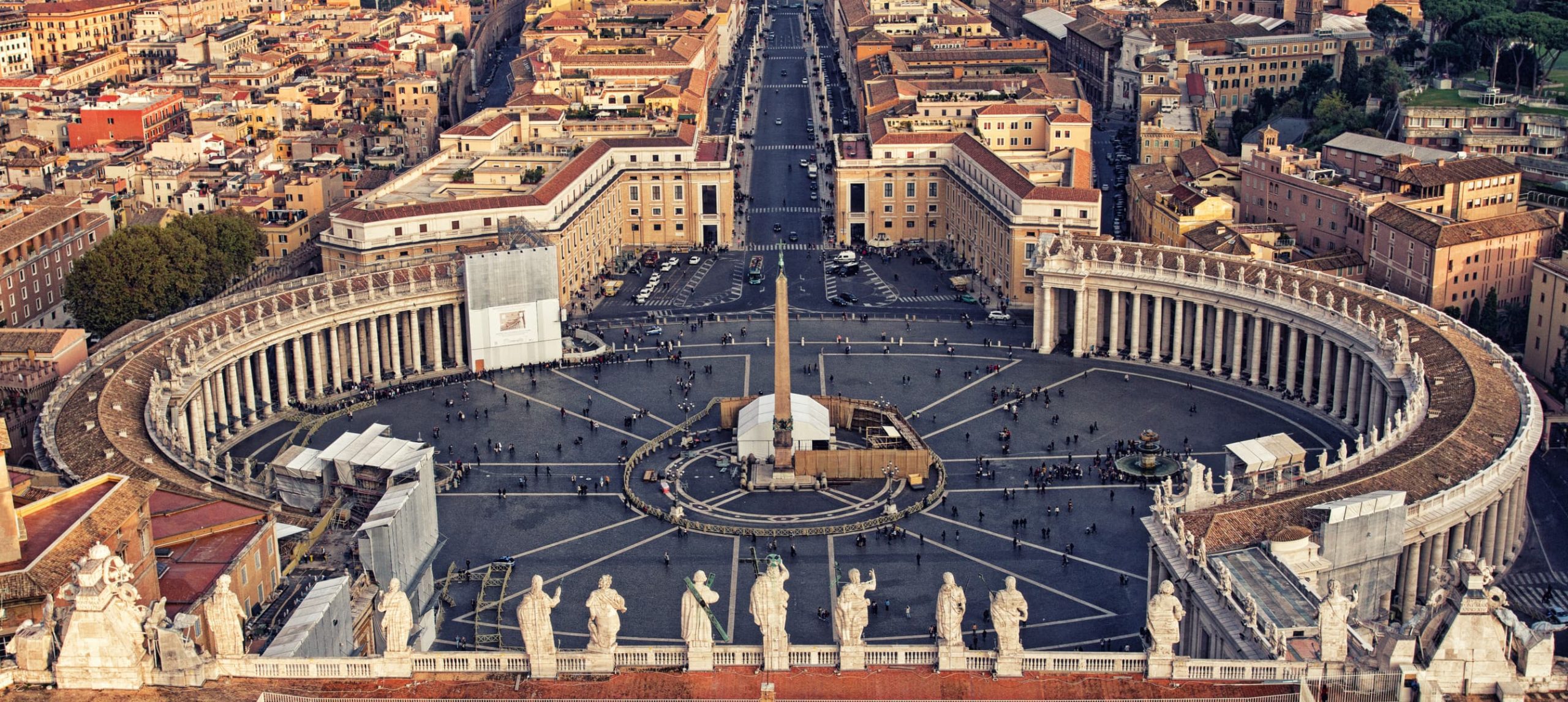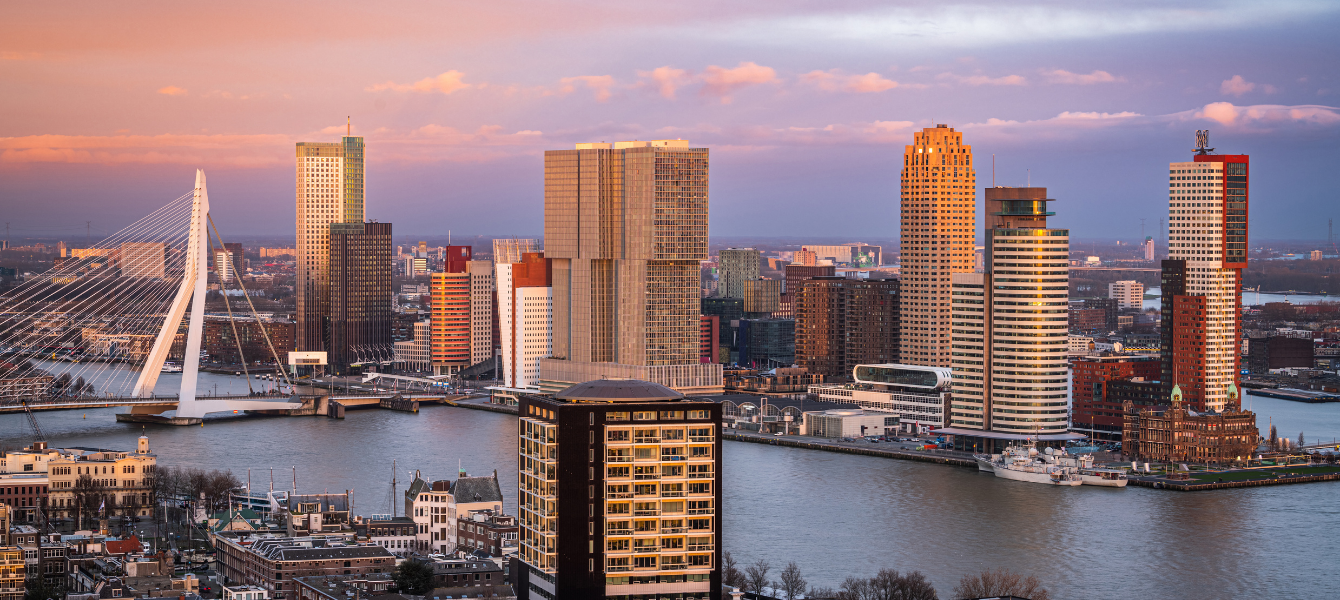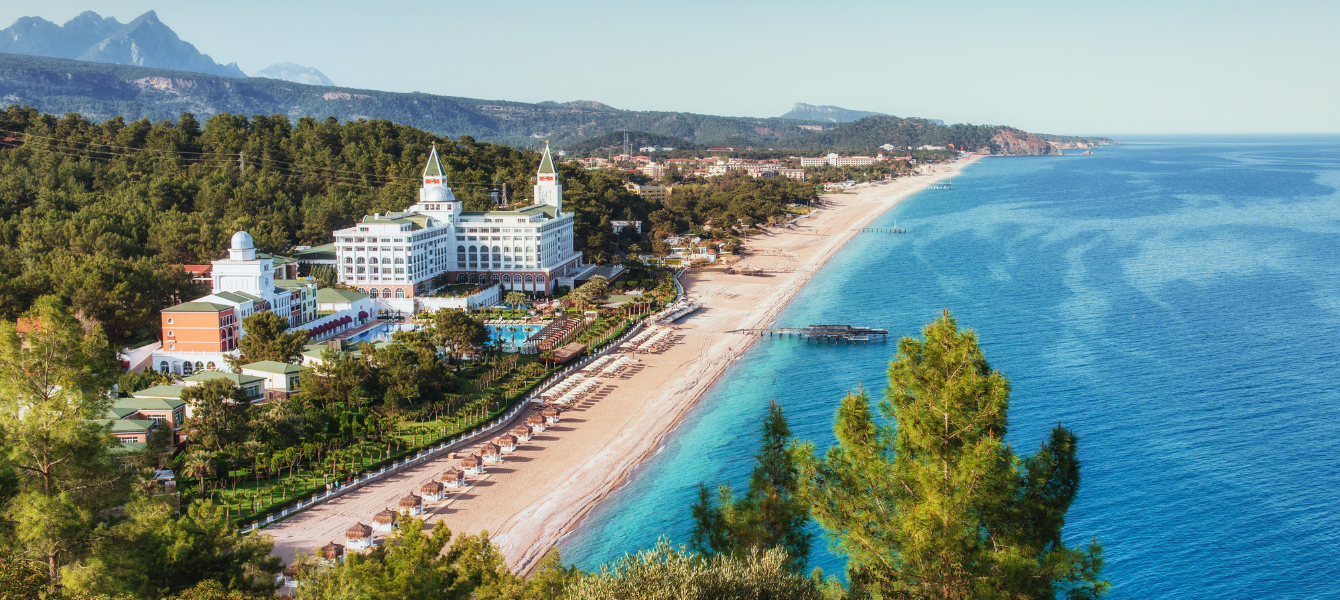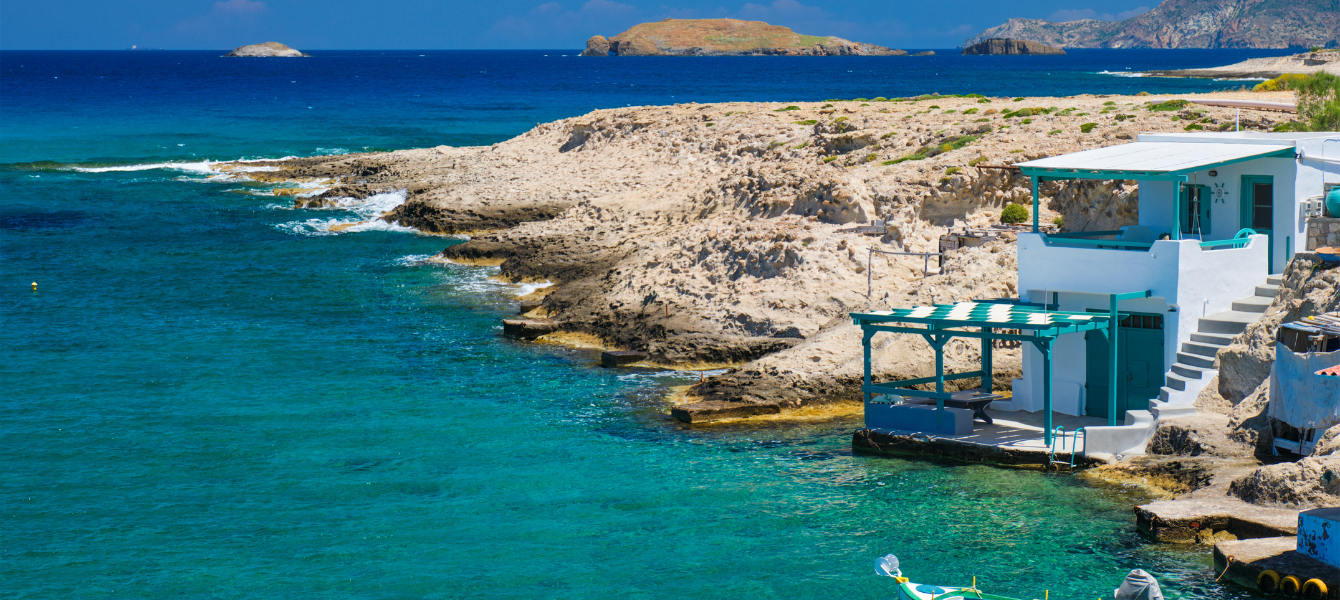The splendid sights in Rome are so generous that one could spend a lifetime exploring the wonders of this attraction-filled destination. While making their way through the charming streets of the Eternal City, expect to come across a treasure trove of charming basilicas, picture-perfect squares, world-class museums, fascinating archaeological sites, and tantalizing restaurants, just to name a few.
Some of the best-known landmarks in Rome include the Spanish Steps, the Vatican Museums, and the Colosseum.
Considering the fact that the Italian capital has enough attractions to keep you busy for days, a week makes for a well-rounded itinerary in the city. But in case you only have 72 hours available, no need to worry! It’s completely possible to visit 3 days in Rome and take in its culturally rich atmosphere.
We’re sure you want to make the most of your trip, so we have created a 3-day Rome itinerary that will have you visiting all the city’s most famous attractions—from the Roman Forum to the Colosseum—with no need to rush!
Quick Jumplinks
Tips For Visiting Rome In 3 Days
- If you want to visit the Colosseum and The Vatican, consider buying online tickets in advance. This will allow you to save time, and avoid the long lines, especially during the high season;
- For optimizing your time even more, opt for skip-the-line tickets to beat queues & crowds anytime;
- Buy a combined entry to the Colosseum, the Roman Forum and Palatine Hill, which are located adjacent to each other.
- A combined guided tour of the Colosseum, the Roman Forum, and Palatine Hill is a great way to learn about Rome’s history and uncover some of these monuments’ restricted areas.
- Deciding where to stay in Rome is crucial, especially if you have limited time. A great idea is to opt for staying in the city center, where most of the attractions and public transportation options are available;
- If you only have three days in Rome, you don’t want to spend too much time trying to figure out how to get around the city. To make your life easier, we have created a thorough guide to transportation in Rome, which is guaranteed to help you get from one place to another seamlessly.
3 Days in Rome Itinerary
Let the excitement of travel commence! Here’s your guide to the best 3 days in Rome.
Day One: Ancient Rome
Rome harbors a dazzling collection of landmarks and archaeological sites dating back almost 2,000 years ago. Not by chance, the city is a veritable wonderland for history buffs seeking to travel back in time, and discover the fascinating wonders of the ancient world.
If this is your case, a great way of starting off your Rome 3-day itinerary is by taking a tour of the city’s impeccably preserved ancient monuments. Here’s a list of not-to-be-missed cultural treasures to visit on day 1.
Colosseum & Arch of Constantine
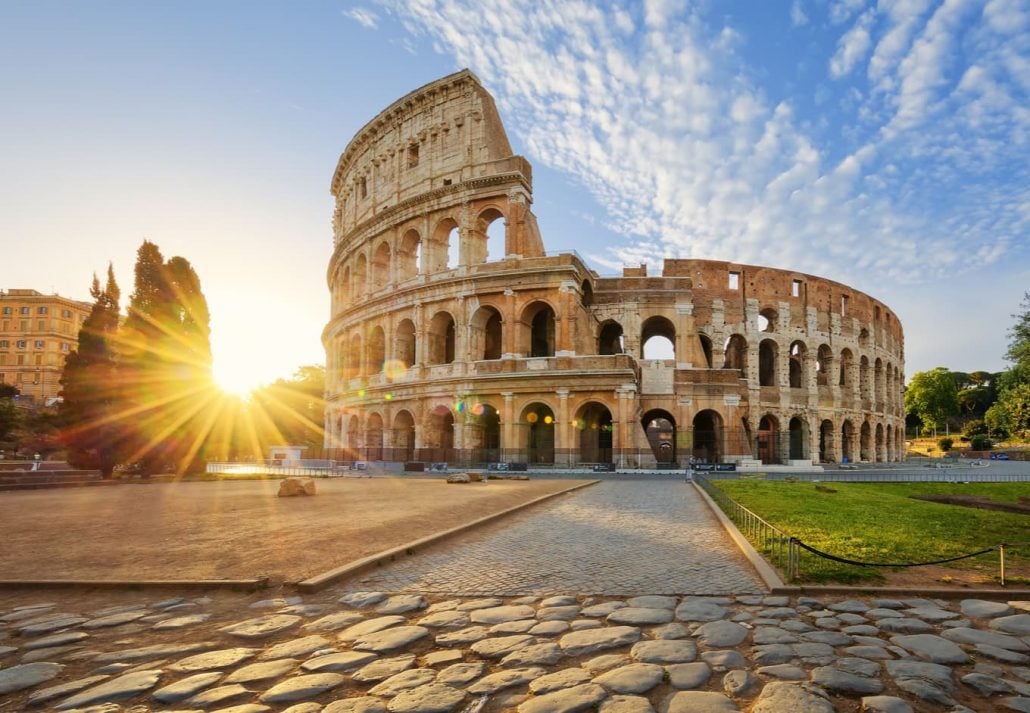
| 📍 Address | Piazza del Colosseo, 1. Get Directions |
| 🚉 Getting There | Take Line B to Colosseo Station |
| 🤑 Ticket Price | €18 per person |
| ⏰ Suggested Duration | 1-3 hours |
Marveling at the Colosseum up close is, unarguably, one of the most breathtaking experiences travelers can enjoy in Rome. This massive ancient amphitheater — the largest ever built in the world — was erected nearly 2,000 years ago under the rule of emperor Vespasian. Back then, this Majestic structure used to host a variety of public spectacles such as gruesome gladiator combats, animal fights, and theatrical performances.
A well-worth experience when visiting this well-preserved site is taking a Colosseum Underground tour, which gives you exclusive access to the tunnels Where animals and gladiators were held captive.
After the Colosseum visit, be sure to head over to the nearby Arch of Constantine. This imposing triumphal arch is the last monument built during Imperial Rome and commissioned by the Roman Senate to celebrate emperor Constantine the Great’s victory over Maxentius at the Battle of Milvian Bridge in AD 312.
Palatine Hill
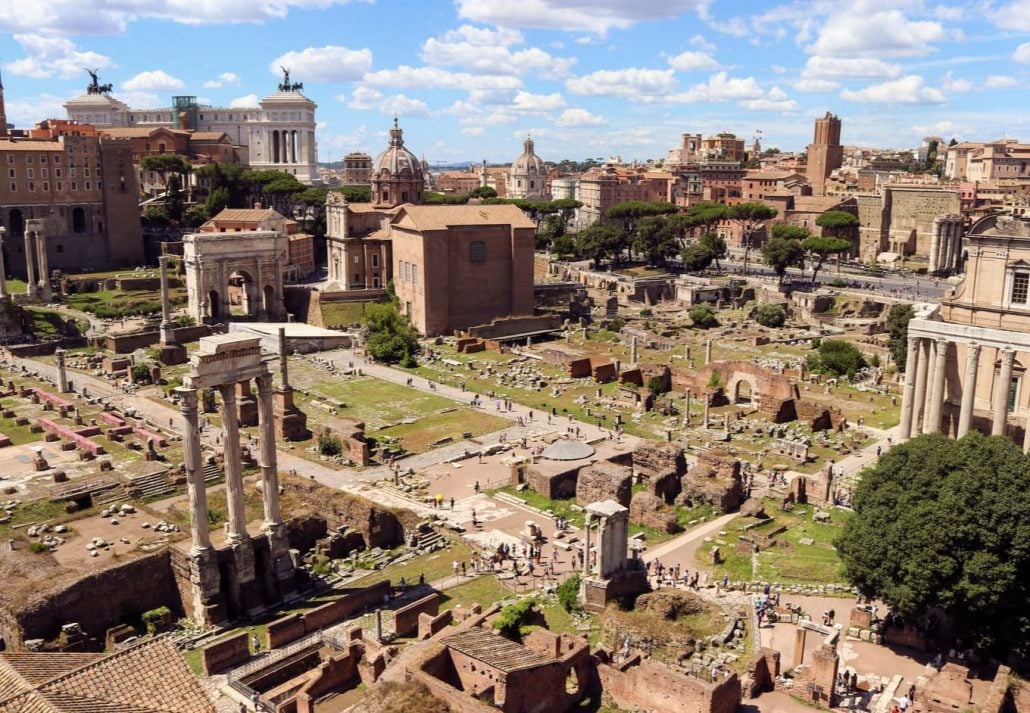
| 📍 Address | 00186 Rome. Get Directions |
| 🚉 Getting There | Take Line B to Colosseo Station |
| 🤑 Ticket Price | €18 per person |
| ⏰ Suggested Duration | 1.5 hours |
Often regarded as the birthplace of Rome, Palatine Hill is truly an open-air museum. The site, which overlooks the Roman Forum, has been inhabited since 1000 B.C. and it’s home to a collection of ruins of imperial palaces once created for the high society.
Highlights include the massive Palace of Domitian, emperor Domitian’s official residence, the House of Livia, known for its gorgeous frescoes dating from around 30 BCE, and Domus Augustana, the primary residence of Caesar Augustus during his reign.
Curious fact: it is believed that Palatine Hill is the location of the Lupercal (the cave where Romulus and Remus were found by the she-wolf).
Roman Forum
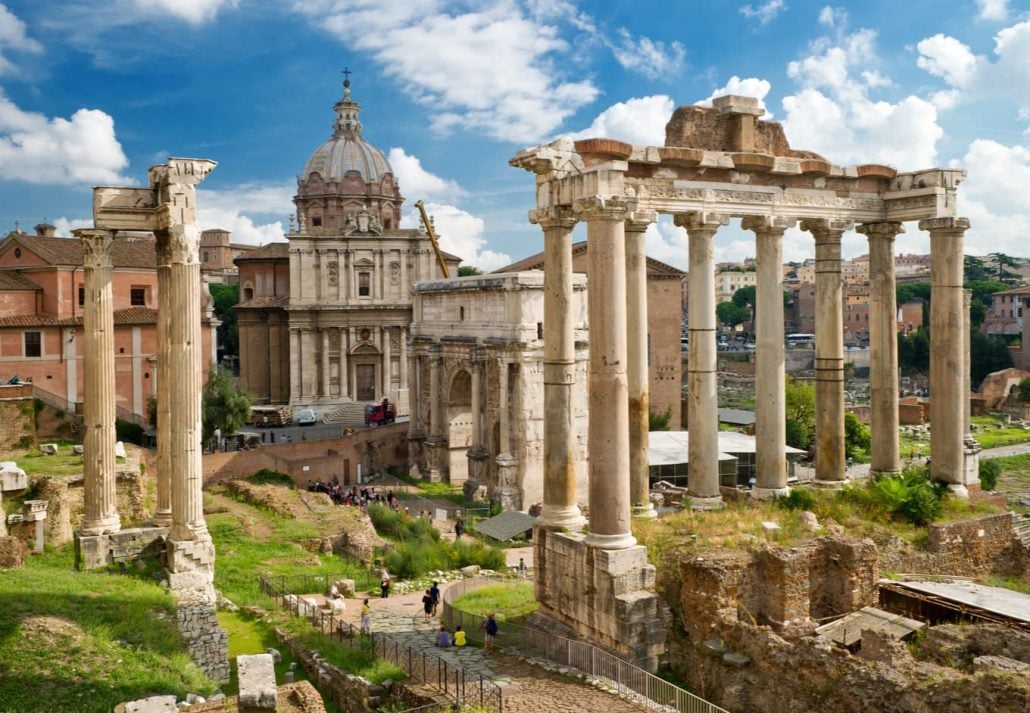
| 📍 Address | Via della Salara Vecchia, 5/6. Get Directions |
| 🚉 Getting There | Take Line B to Colosseo Station |
| 🤑 Ticket Price | €18 per person |
| ⏰ Suggested Duration | 2-3 hours |
Just a stone’s throw away from both Palatine Hill and the Colosseum lies the Roman Forum. Once the heart of ancient Rome, the site was occupied by the city’s most striking buildings such as temples and monuments, and used to host a variety of events like public meetings, gladiatorial combats, criminal trials, and elections.
While many of the Roman Forum’s buildings were damaged by earthquakes after the 7th century, it’s still possible to see strikingly beautiful ruins when visiting the site. Important surviving structures include the remains of The Temple of Saturn, the Temple of Castor and Pollux, the Temple of the Deified Caesar, the Mamertine Prison, and the Curia (senate house).
Trevi Fountain
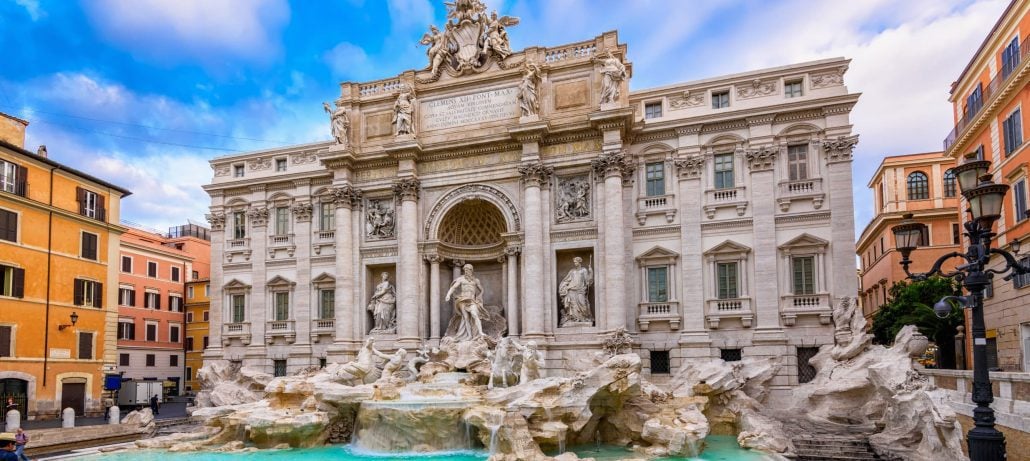
| 📍 Address | Piazza di Trevi. Get Directions |
| 🚉 Getting There | Take Line A to Barberini Station |
| 🔎 Guided Tour | Starting from $13 |
| ⏰ Suggested Duration | 1 hour |
In need of a quick break from all of Rome’s history-filled monuments? Then head over to the Trevi Fountain for a restful respite and a well-deserved dose of beauty.
Located within a pleasant 10-minute walk from the Roman Forum, this Insta-worthy fountain leaves visitors in awe due to its show-stopping travertine sculptures representing mythological creatures and allegorical figures. Its crown jewel is Pietro Bacci’s statue of Oceanus, who stands atop a chariot pulled by sea horses and is accompanied by tritons. There are also gorgeous statues representing Abundance and Health.
Aside from its striking beauty, Fontana di Trevi also attracts thousands of visitors daily due to its “magical powers”. After all, it is believed toss a coin into the water will one day return to Rome!
The Pantheon
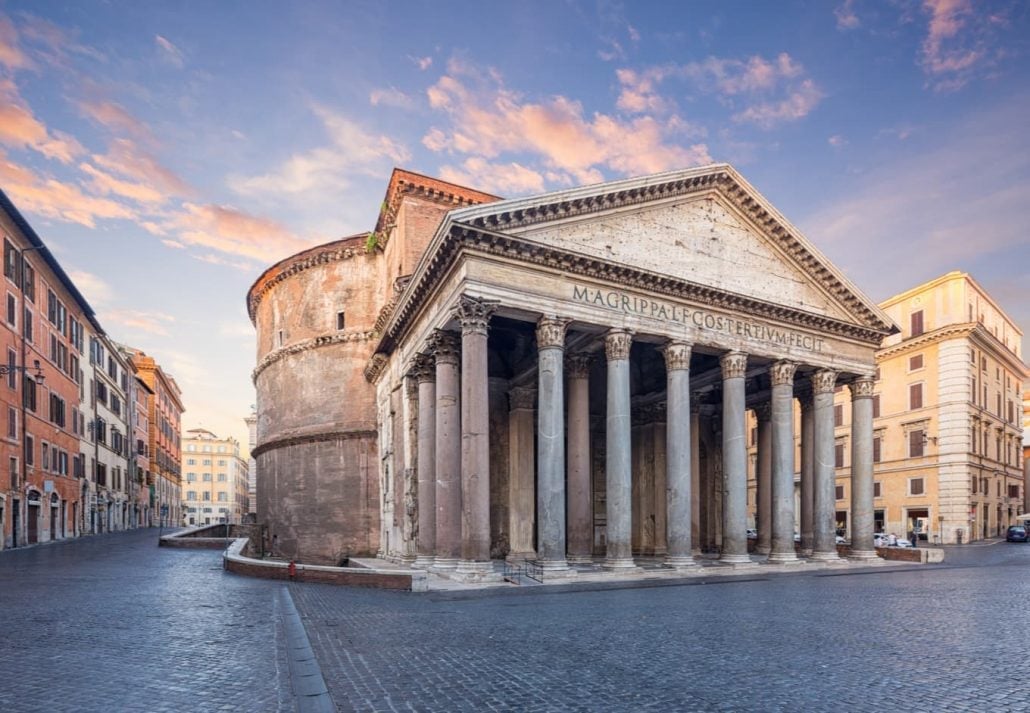
| 📍 Address | Piazza della Rotonda. Get Directions |
| 🚉 Getting There | Take Line A to Barberini Station |
| 🤑 Ticket Price | €5 for adults. Free for children |
| ⏰ Suggested Duration | 1-2 hours |
If you feel ambitious enough, on the same day you can also spare some time to visit the Pantheon.
Originally built as a temple during the reign of Augustus (27 BC – 14 AD), the structure was rebuilt by emperor Hadrian in 126 AD., making it the best-preserved construction of ancient Rome.
Must-sees during the Pantheon visit include the building’s immense domed ceiling, which is almost half the length of a football field, and the tombs of major Italian historical figures like the artist Raphael and the former Queen Margherita.
The Pantheon is a bucket-list item for budget travelers, and the visit to the monument is considered one of the best free things to do in Rome.
Day 2: Central Rome
Now that you were given a taste of ancient Rome, it’s time to go for an idle stroll through the city center. Freely meandering along jaw-dropping streets is one of the best ways of experiencing the Eternal City, and getting up close and personal with its top attractions.
Have a look below to find out the best things to see on Rome day 2.
Santa Maria Maggiore Cathedral
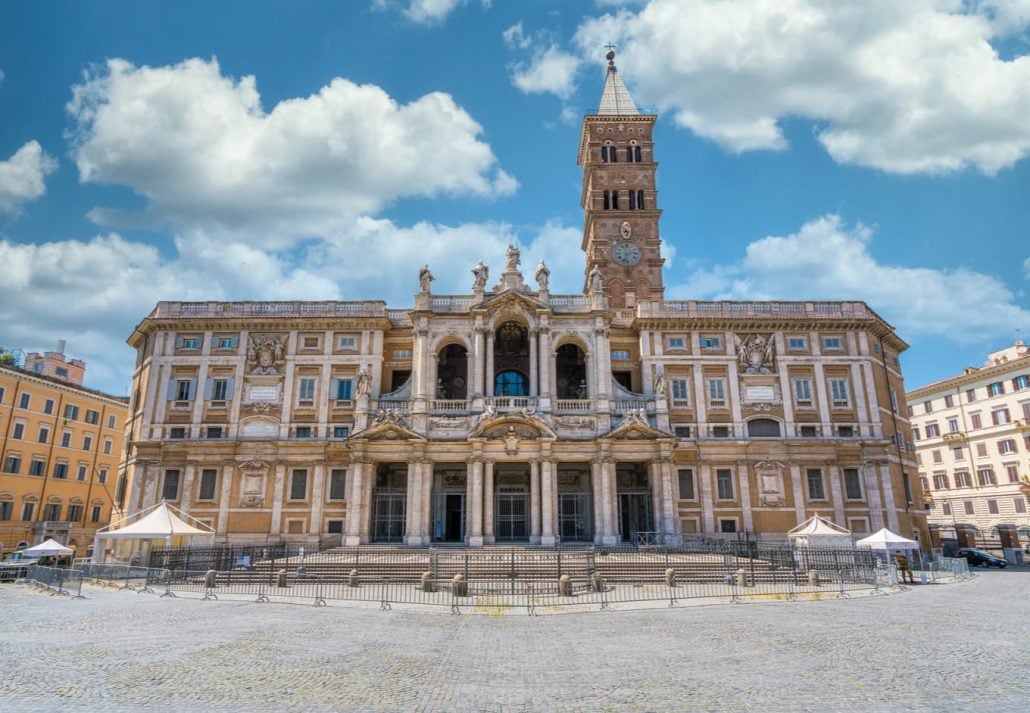
| 📍 Address | Piazza Santa Maria Maggiore, 42. Get Directions |
| 🚉 Getting There | Takes buses 16, 70, 71, 75, 117, or 590 |
| 🤑 Ticket Price | Free to visit |
| ⏰ Suggested Duration | 2 hours |
Nestled in the summit of the Esquiline Hill, on the site where the Virgin appeared in a dream of pope Liberius, the Basilica of Saint Mary Major (Santa Maria Maggiore church) is one of the largest churches dedicated to the Virgin Mary in Rome.
The basilica dazzles visitors with its striking features, such as a 16th-century ceiling gilded with gold, frescoes by Giovanni Baglione, and a triumphal arch decorated with mosaics. Achingly beautiful!
Capitoline Museums
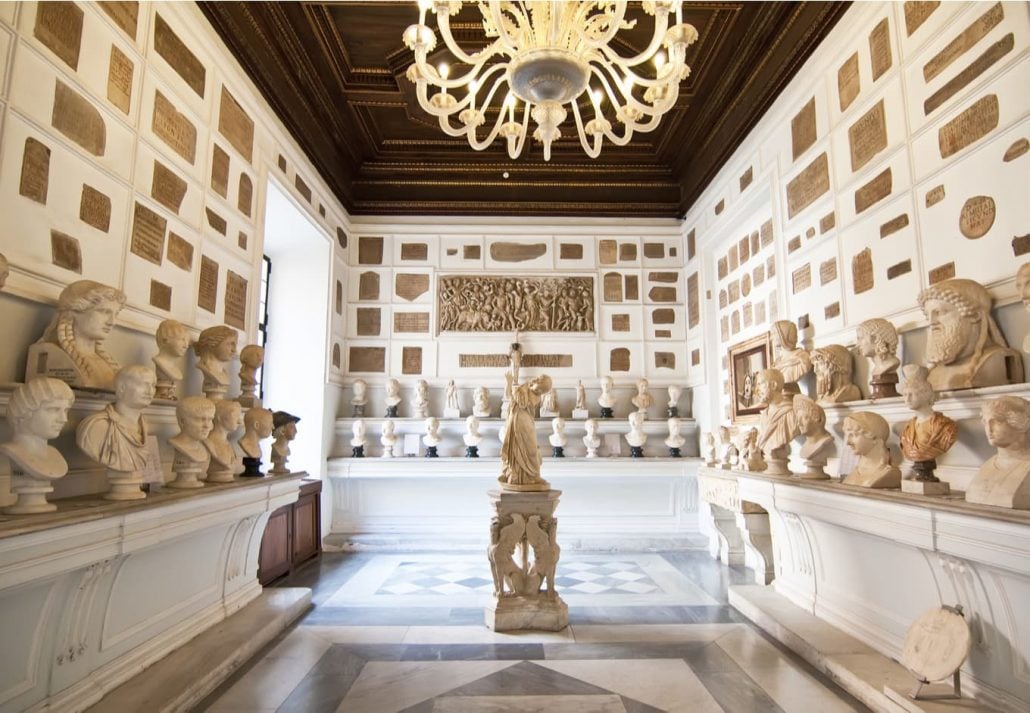
| 📍 Address | Piazza del Campidoglio, 1. Get Directions |
| 🚉 Getting There | Take Line B to Colosseo Station |
| 🤑 Ticket Price | €14–16 |
| ⏰ Suggested Duration | 2 hours |
Whether you’re an art lover or a culture buff, be sure to visit the Capitoline Museums. Known as “Musei Capitolini”, this dazzling collection of art and archaeological museums located in Piazza del Campidoglio dates back to 1471 when Pope Sixtus IV donated a collection of bronze statues to the People of Rome.
While snooping around the Capitoline’s galleries, you’ll come across famed masterpieces by Caravaggio, Titian, Rubens, and Van Dyck, as well as works found during excavations around Rome.
Make sure you visit Palazzo dei Conservatori, which is home to the iconic statue of the she-wolf suckling the twins Romulus and Remus, an iconic symbol of the city of Rome.
Piazza Navona
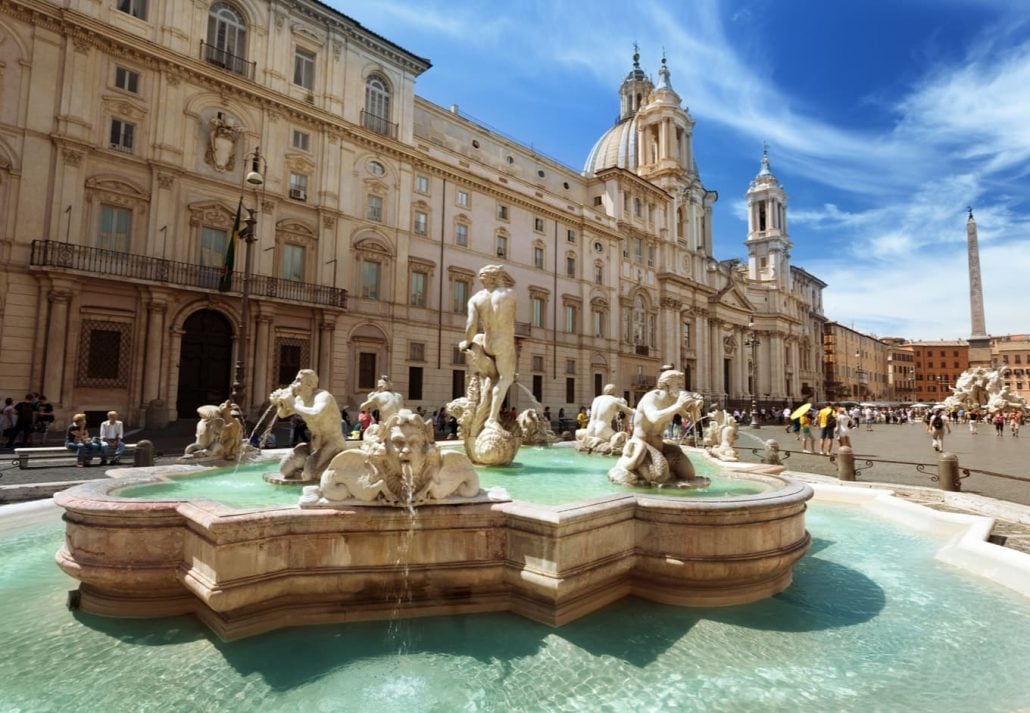
| 📍 Address | Piazza Navona, 00186. Get Directions |
| 🚉 Getting There | Take Line A to Barberini Station |
| ⏰ Suggested Duration | 2 hours |
From the Capitoline Museums, make your move to Piazza Navona, one of the most stunning piazzas in Rome. Commissioned in 86 CE by emperor Titus Flavius Domitianus as a gift to the people of Rome, this baroque-style square is praised for its artfully designed fountains — Fontana del Moro, Fontana de ‘Calderari, and Fountain of the Four Rivers.
Piazza Navona is also home to the treasured Sant’Agnese in Agone, a 17th-century Baroque church, and the Palazzo Pamphili, where you’ll find one of the most incredible private art collections in Rome, Italy.
After exploring the square’s marvels, be sure to stop by one of the local restaurants to get some rest, and enjoy an authentic Italian lunch.
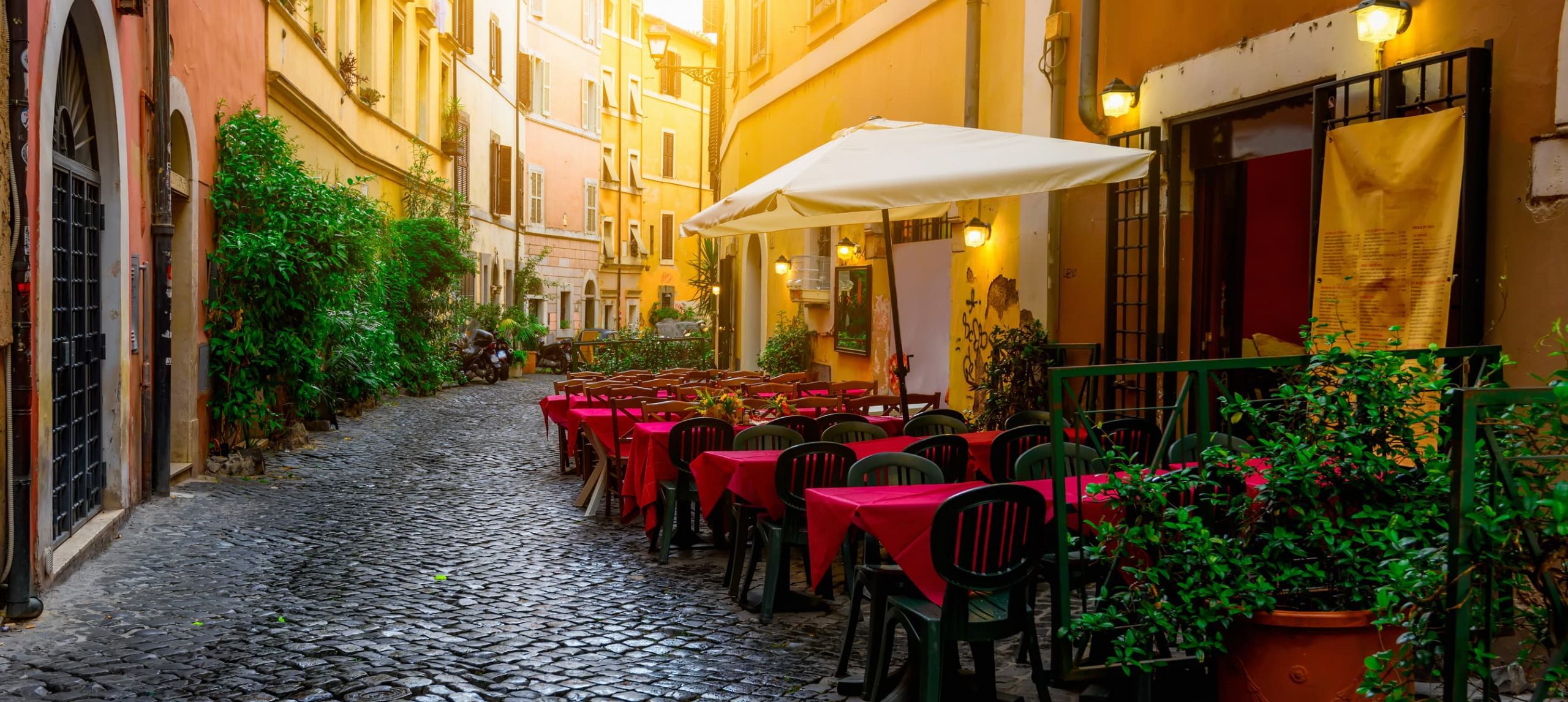 10 Best Restaurants in Rome
10 Best Restaurants in Rome
Galleria Borghese & Villa Borghese Gardens
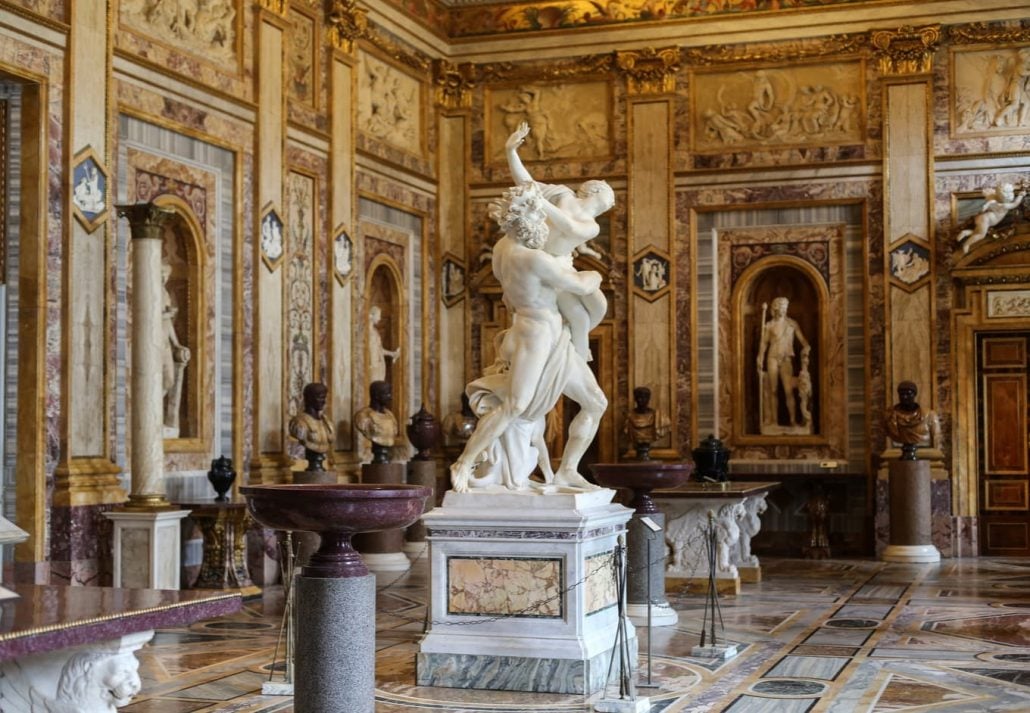
| 📍 Address | 00197 Rome. Get Directions |
| 🚉 Getting There | Take Line A to Spagna Station |
| 🤑 Ticket Price | Free entry for Villa Borghese Gardens |
| ⏰ Suggested Duration | 2 hours |
There’s no better place to spend a lovely afternoon in Rome than visiting Villa Borghese. Nestled on the Pincian Hill, this dreamy site encompasses a lush park, which covers 80 hectares dotted with temples, piazzas, cinemas, and even a replica of Shakespeare’s Globe Theater.
Visitors can both relax in the Borghese gardens, known for their peaceful and restoring atmosphere, as well as check out the villa’s art museum, the famous Galleria Borghese.
There, you will stand in awe of a precious collection of paintings, sculptures, and antiquities by renowned Italian artists such as Bernini, Caravaggio, Canova, and Raphael.
Piazza di Spagna & The Spanish Steps
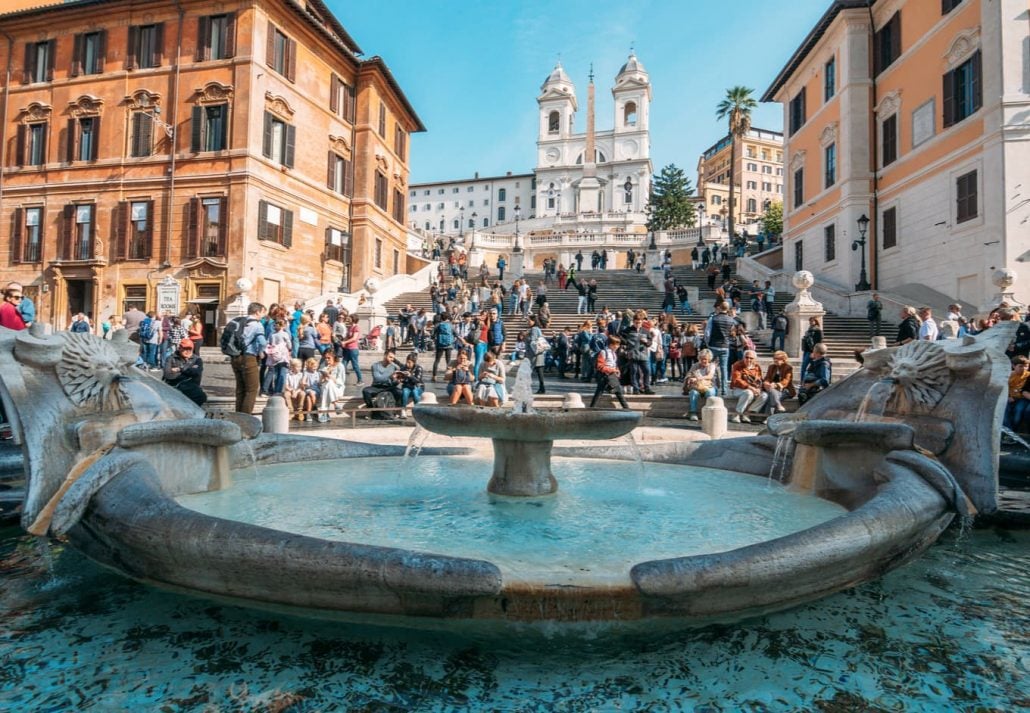
| 📍 Address | Piazza di Spagna, 00187 Roma RM, Italy. Get Directions |
| 🚉 Getting There | Take Line A to Spagna Station |
| 🤑 Ticket Price | Free to visit |
| ⏰ Suggested Duration | 1 hour |
The most perfect way to end a day of adventuring into the city? By heading over to Piazza de Spagna, which is located within a 20-minute walk from Villa Borghese. Running from the square, you’ll see Via Dei Condotti, home to an array of luxury boutiques and one of the best places to go shopping in Rome.
Aside from indulging in luxurious retail therapy, you can also climb to the top of the “Spanish Steps”, a Rococo-style staircase that rises up from the square, and provides visitors with the most amazing view of the city.
Day 3: Vatican City
A visit to the Vatican is the cherry on top of any finely-curated 3 days in Rome itinerary. Both the permanent seat of the Popes and the center of the Roman Catholic Church, the city-state is home to a plethora of relics — from otherworldly basilicas to outstanding museums that house over 70,000 artworks.
With so many wonderful sights packed into just one place, setting aside an entire day for your visit will give you the perfect amount of time to explore the Vatican with no rush.
St Peter’s Basilica
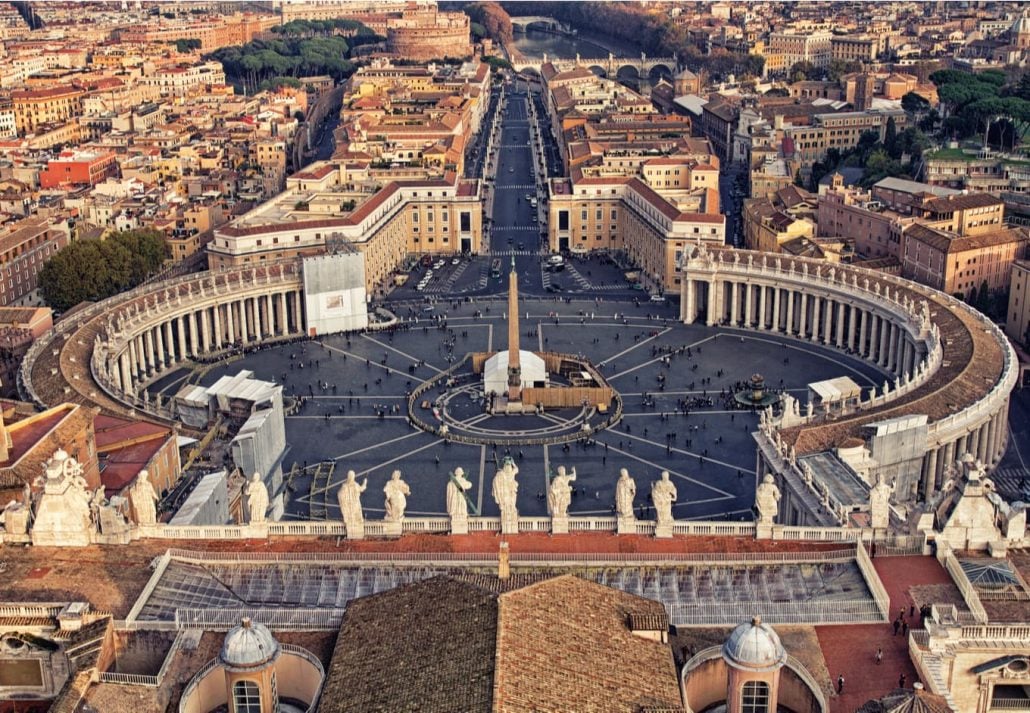
| 📍 Address | Piazza San Pietro, Vatican City. Get Directions |
| 🚉 Getting There | Take Line A to the Ottaviano-S. Pietro Station |
| ⏰ Suggested Duration | 2-3 hours |
Start your visit by checking out the legendary St Peter’s Basilica. Located in the namesake square, the basilica is considered one of the most breathtaking masterpieces of Renaissance architecture. The building was erected in the 4th century over the tomb of St. Peter the Apostle, and it’s home to La Pietà, Michelangelo’s famous marble sculpture.
The Vatican Museums
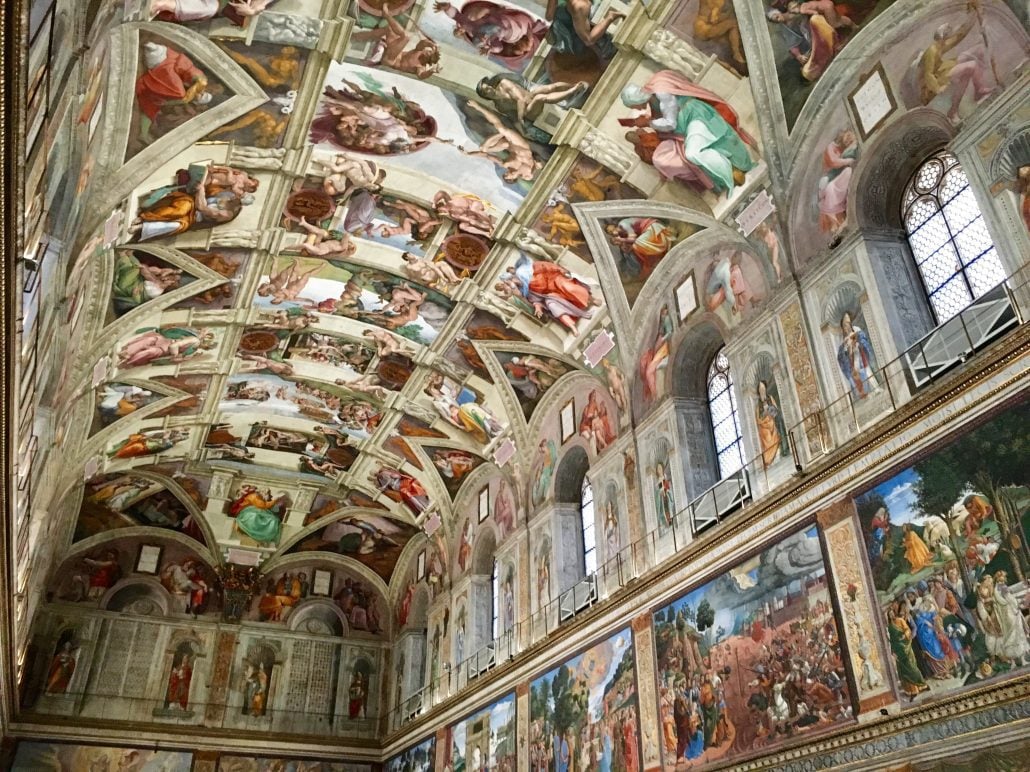
| 📍 Address | Vatican City. Get Directions |
| 🚉 Getting There | Take the train lines FL3 or FL5 to Roma San Pietro. |
| ⏰ Suggested Duration | 2-3 hours in the Vatican Museums |
The Vatican is also home to 54 galleries, also known as the Vatican Museums. Must-visit ones include the Sistine Chapel, where you’ll be able to marvel at the lavish ceiling frescoes by Michelangelo, aside from paintings by Sandro Botticelli, Domenico Ghirlandaio, and Pietro Perugino.
Other bucket-list Vatican museums are the Gallery of Maps, which boats a 120-meter-long corridor filled with frescoes representing the map of Italy, and the Raphael Rooms, part of the apartment of Pope Julius II.
Frequently Asked Questions
What are the best things to do in Rome in 3 days?
With 3 days in Rome, you can visit iconic sites like the Colosseum, Roman Forum, Vatican Museums, Sistine Chapel, St. Peter’s Basilica, Trevi Fountain, Pantheon, Spanish Steps, and more.
How many days to spend in Rome?
To fully experience Rome without feeling rushed, it’s recommended to spend at least 3 days in the city. This allows time to see all the major attractions, enjoy local foods, and soak in the atmosphere.
What are some fun things to do in Rome for three days?
Fun activities in Rome for a 3-day trip include visiting historic landmarks, exploring neighborhoods like Trastevere, enjoying Italian cuisine, taking day trips to nearby cities like Naples or Pompeii, and experiencing the local culture.
What are some must-see attractions in Rome for a 3-day visit?
Must-see attractions in Rome for a 3-day itinerary include the Colosseum, Vatican Museums, St. Peter’s Basilica, Trevi Fountain, Pantheon, Spanish Steps, and other iconic sites that showcase the rich history and culture of the city.
